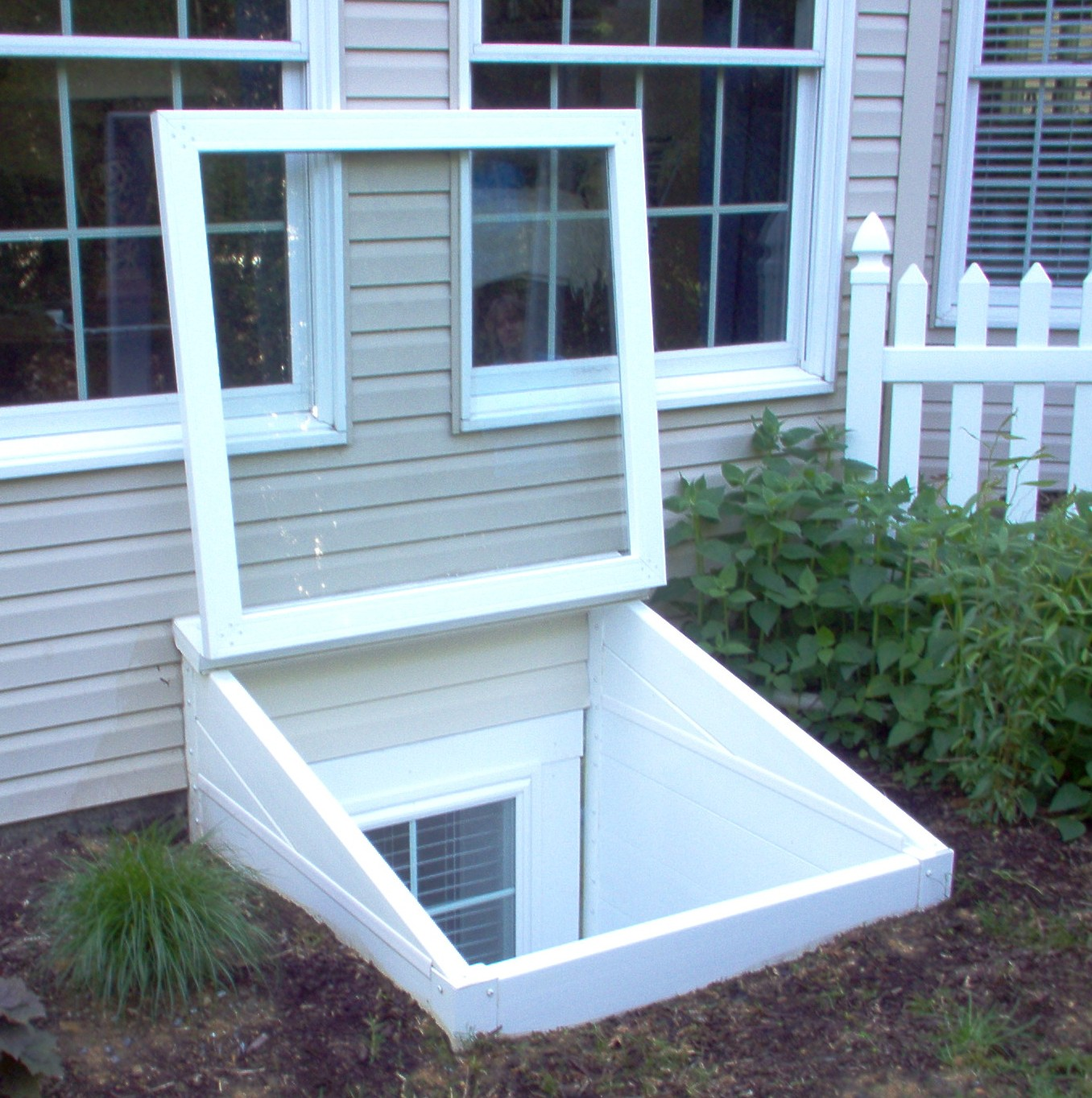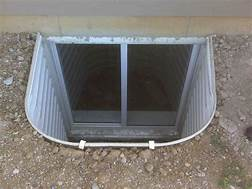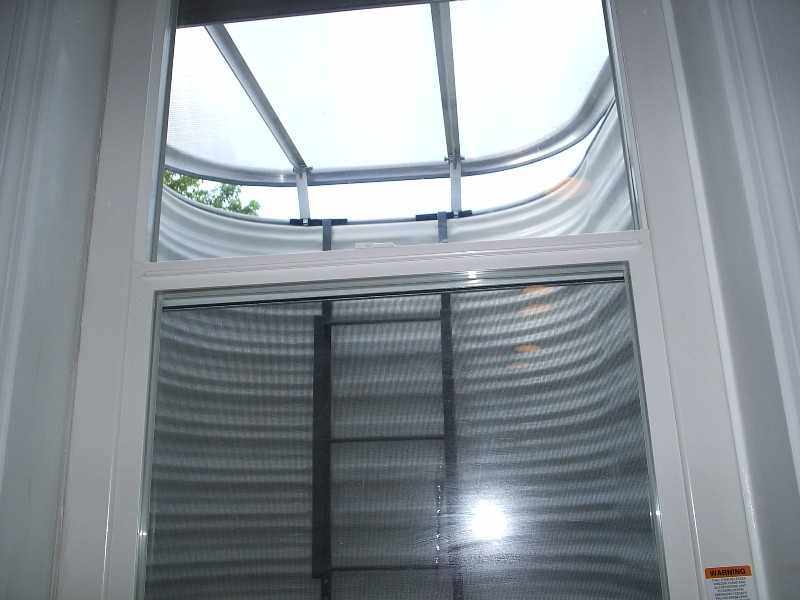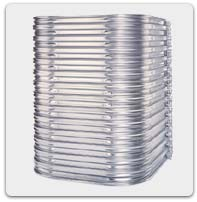Window Well
3 products
Showing 1 - 3 of 3 products






Redi-Exit supplies a complete selection of egress wells in wide range of prices, from our large inventory allowing us to quickly meet any egress well requirement you may have.
We have egress wells that range in heights from 8 to 98 inches high and widths from 36 inches to 16 foot wide. Redi-Exit has wells made out of many materials including Galvanized Steel, Fiberglass, Polyethylene Plastic, and Vinyl.
Our Compact Egress Wells are the smallest wells available in the market place today that meet all the current International Residential Building Code (IRC) egress requirements.
They are available in three styles:
- Compact Economy Series –Galvanized Steel
- Compact Series Gray or Tan Plastic
- Deluxe Compact Series – White Plastic
These wells are great to use when space is limited
Redi-Exit Inc offers a large variety of standard sized egress wells including:
- Galvanized Steel Wells
- Fiberglass Wells
- Bilco Wells – StakWEL and ScapeWEL Plastic
Most of these egress wells are available in heights up-to 83 inches high.
Redi-Exit has a product line of custom sized egress wells that can be configured to solve your most difficult basement egress problems. This flexible product offering allows us to build wells as wide as 16 foot and as deep as 94 inches.
A matching Deluxe Hinged Egress Cover can be designed to complete your basement egress installation.
Redi-Exit also offers egress well covers sized to fit each of our wells as well as a wide variety of stock sized and custom sized egress windows that work well with our egress wells.

What is the purpose of a Window Well?
A window well is a shallow excavation in the ground around a basement window. It helps to keep rainwater and debris from entering the basement, and also provides an emergency exit route if necessary. In addition, it helps to provide natural light into the basement area. If your home has a basement, installing window wells can be an important part of your safety and home maintenance plan. They are also an aesthetically pleasing way to add character and value to your home. Window wells come in a variety of sizes, shapes, and materials to match your home’s style.
Window wells can also be outfitted with covers or grates for added protection and privacy. Installing window wells correctly is very important in order to ensure that they are effective and safe to use. If you are unsure about any aspect of the installation, it’s best to consult a professional for advice. Window wells should be inspected annually and cleaned out as needed to ensure that they remain in good working condition.
By taking the time to properly install and maintain your window wells, you can help protect your basement from water damage, provide additional light, and give yourself an emergency exit route. Window wells are a great way to add value and character to your home, while providing peace of mind for you and your family.
Do Window Wells keep water out?
Yes, window wells help keep water out of your basement by diverting rainwater away from the foundation. The well should be at least 6 inches below the bottom of the window frame and sloped toward a drain or sump pump to ensure that any water entering the well is quickly removed. It is also important to check that your window wells are properly sealed. If the seals are cracked or broken, water can enter the window well and seep into your basement. Installing a cover or grate over the top of the window well will also help to keep out debris, animals, and other unwanted visitors.

How deep do Window Wells need to be?
Window wells should be as deep as the window sill and at least 6 inches below the bottom of the window frame. This will help ensure that any water entering the well is quickly removed by a drain or sump pump. The depth of your window well can vary depending on soil type, ground elevation, climate, and other factors. It's best to consult a professional for advice on the best depth for your specific window well.
Are Window Wells required by law?
In some areas, local building codes may require that all basement windows be equipped with window wells to help prevent water damage and provide an emergency exit route. It's important to check your local regulations before installing any window wells. Even if window wells are not required by law, they can still be an important part of your home maintenance plan as they provide protection from water damage and added value to your home.
How does a Window Well attach to a Foundation Wall?
Window wells attach to the foundation wall by using masonry anchors and stucco expansion screws. The anchor is placed in the mortar joint between two courses of bricks or blocks, while the screw is attached directly to the foundation wall. It’s important to make sure that these pieces are securely installed in order to ensure a tight fit against the foundation wall. It’s also important to check for cracks or gaps where water could enter the window well and seep into your basement. Caulking can be used to fill any cracks or gaps before attaching the window well.
How do I fit a Window Well with a Basement Window?
Window wells should be fitted to the window frame, not the foundation wall. This allows for a waterproof seal and helps prevent any water from entering the window well or basement. To fit a window well with a basement window, use masonry anchors and stucco expansion screws to attach the window well to the mortar joint between two courses of bricks or blocks. Then, the window well should be secured to the window frame with a waterproof sealant. It’s important to make sure that all of the pieces are securely installed and that there are no gaps or cracks where water can enter.
Egress Ladders vs Egress Window Wells with built in steps
Egress ladders are a common way to provide an emergency exit route from a basement. They offer some advantages over window wells with built in steps, such as being easier to install and more affordable. However, window wells with built in steps can be more attractive and provide additional light and ventilation, as well as easier access for pets or small children. Ultimately, the decision between an egress ladder and a window well with built in steps should be based on your needs and the specific requirements of your home.

Maintaining your Window Well for Homeowners
Window wells should be checked regularly for signs of wear and tear. Check for any cracks or gaps in the seals, as well as any debris that may have accumulated over time. Cleaning the window well regularly will help to prevent moisture build-up and keep water from entering your basement. It’s also important to inspect the drain or sump pump to make sure it’s functioning properly. If you have any questions or concerns about maintaining your window well, it’s best to contact a professional for advice.
Window wells can be an important part of a home maintenance plan and can provide added protection from water damage. Keeping your window well in good condition will help to ensure that you and your family are safe from any potential water damage. With proper installation, maintenance, and inspection, window wells can be an effective way to protect your home and provide an emergency exit route.
Keeping dirt, snow, rain, and other debris out
This will help to ensure that it continues functioning properly and protects your home from water damage. Installing window wells correctly is essential for protecting your home and making sure that it remains safe, dry, and comfortable. It’s important to check with a professional before beginning any installation projects to make sure that you understand all local regulations and safety requirements. With the right installation and maintenance, window wells can be an effective way to protect your home and family.
Difference between Fiberglass and Metal Wells
Fiberglass window wells are an attractive, lightweight option that can be easily installed and maintained. They come in a variety of colors and styles to match any home’s design. Fiberglass window wells are also relatively inexpensive and long-lasting.
Metal window wells offer the same benefits as fiberglass but with increased durability and strength. They are available in a variety of sizes and colors and can be easily customized to fit any home. Metal window wells are more expensive than fiberglass but offer greater protection from water damage, making them an ideal choice for homes in areas with heavy rainfall or snowfall.
No matter what type of window well you choose, it’s important to keep it in good condition by regularly checking for cracks or gaps, inspecting the drain and sump pump, and cleaning any debris that may have accumulated over time. With proper installation and maintenance, window wells can provide effective protection from water damage and provide an emergency exit route from your basement.

